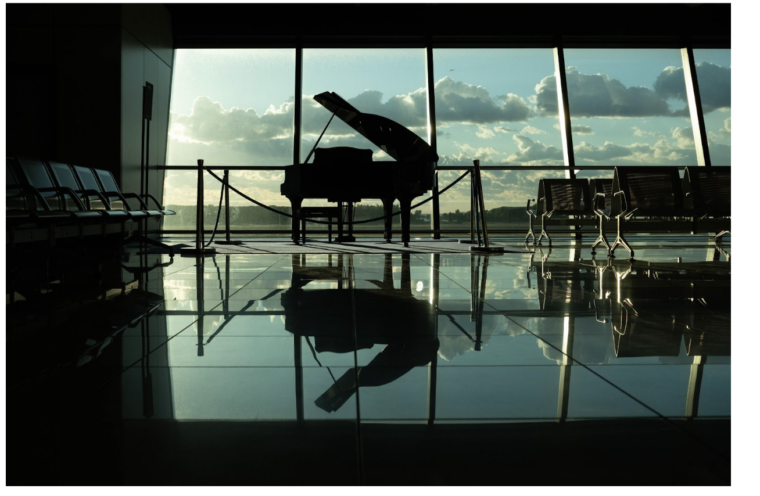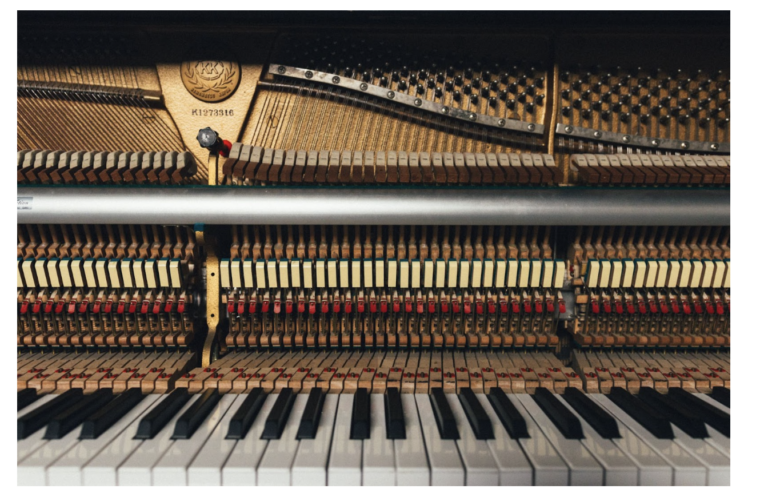The Importance of Tuning the Piano After Moving
A piano is a very delicate instrument with hundreds of small parts (top damper flange, knuckles, damper spoons, etc.). During the moving process, they can be subject to mechanical impact and changes in microclimate that require tuning afterward.

(Source – Unsplash)
Key Piano Tuning Issues
When moving a piano, you should consider 2 key aspects: potential physical impact (especially when moving is performed not by professionals) and microclimate changes.
For instance, you barely need to ask for professional tuner help when you move a piano from one room to another. But taking the instrument to another region or a city is a completely different thing.
Mechanical Damage and Jostling
Typically, transporting a piano involves removing all protruding parts, carefully turning it on its side, and placing it on a shipping cart. At each of these stages, mechanical damage can occur that affects the melody of the piano.
- Problems with strings. Each piano string is subjected to extreme tension ranging from 75kg to 100kg to create a specific sound tonality. While this tension can be held stationary, moving the piano reduces it. Take into account that new pianos have stiffer strings than older musical instruments.
- The adjustment pins may slip off. These parts are made of wood and can easily become loose when moved.
- Foreign objects inside. Almost every piano becomes a real trap for foreign small objects like toys, paper clips, pen caps, etc. When moving, they can damage the inside of the instrument.
- Improperly assembled piano is another big problem. Even a slight misalignment when mounting the pedals or a stripped screw can damage the entire structure, leading to costly repairs. This is another reason not to play the piano until its condition is assessed.
Microclimate Changes
The piano is almost 85% made of wood, which is characterised by a hygroscopic process. As a result, moisture is absorbed and released, which leads to movements of little parts (shrinking or expansion) and disruption of the sound of the piano. Also, never place the piano in a location exposed to direct sunlight.
This will also lead to rapid drying of the wood and a change in the sound of the instrument. In addition, the sun’s rays can cause the paint to fade and lose its original beauty. After moving the piano, you should not immediately start tuning it because it will be no more than a waste of money. The only exception is moving a piano to another room.
How Soon After Moving Should the Piano Be Tuned?
Although the piano can adapt to a new microclimate within 72 hours, waiting 3 to 5 days is better. If this is a new instrument, within a year after moving, it will need about 3 adjustments to adapt to the new place fully. Automatic systems that maintain humidity at the target level for the instrument (46% – 71%) can help you with this.

(Source – Unsplash)
Tips to Help Keep a Piano in Tune During Moving
Use the following tips to keep the original sound of your instrument as much as possible during transportation.
- Humidifier. If you have the opportunity to use a humidifier inside the truck, then use it. With its help, you can maintain the humidity level within 46% – 71% all the way, regardless of the weather conditions outside.
- Use covered trucks. When transported in closed trucks, exposure to direct sunlight and increased temperature inside the piano are excluded. If transported for a long period of time, internal parts such as strings and hammers will expand, resulting in deterioration in the sound of the instrument.
- Fixation and coating. The piano consists of nearly 12,000 thousand parts, including fittings, bushings, and dampers that do not withstand vibration. During transportation, it is necessary to securely fix the piano with straps to prevent the elements from becoming loose and going out of tune. It is also important to completely cover the instrument to prevent dust and small objects from getting inside.
Do not forget that you need to tune the instrument whenever you move it. The exception is a change of its position within the same house. Typically, moving a piano from one room to another does not cause problems unless the new location has a different climate (for example, a patio, a humid garage, or a den).
